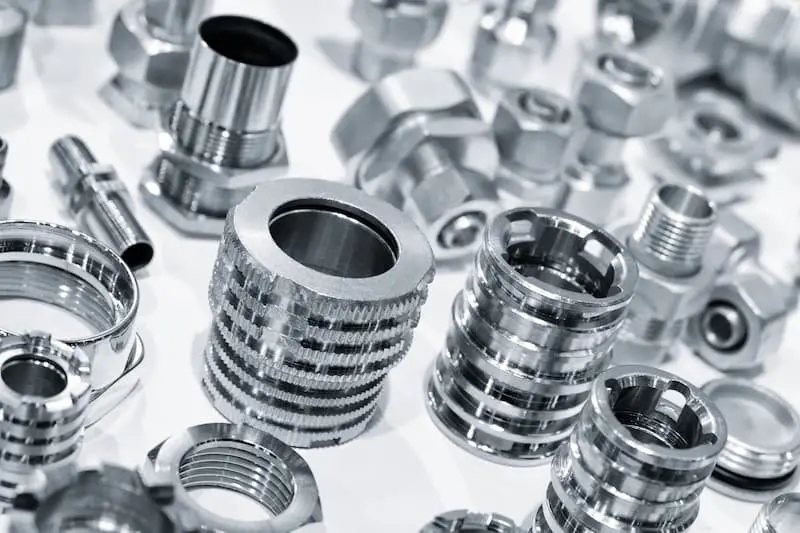https://isohitech.com/ In the vast landscape of industries, from manufacturing to technology, machine parts play a pivotal role in ensuring smooth operations. From gears and bearings to complex circuit boards, the intricate world of machine parts deserves a closer look.
Understanding Machine Parts: An Overview
Mechanical Components
1. Gears and Bearings
https://incomepultrusion.com/ Machine parts, such as gears and bearings, form the backbone of mechanical systems. Gears facilitate movement, and bearings reduce friction, ensuring seamless operations.
2. Shafts and Axles
Shafts and axles transmit power within a machine, converting energy and enabling various functions. Understanding their roles is crucial for optimizing performance.
Electrical Components
1. Motors and Generators
In the realm of electrical components, motors and generators are essential. Motors convert electrical energy into mechanical power, while generators perform the opposite, highlighting the interconnected nature of machine parts.
2. Circuit Boards
The brains of many machines, circuit boards control and coordinate different functions. Exploring their intricacies provides insights into the heart of modern machinery.
Unveiling the Functionality of Machine Parts
Mechanical Components
1. Transmitting Power
Machine parts are designed to transmit power efficiently. Exploring how this transmission occurs sheds light on the inner workings of machines.
2. Facilitating Movement
https://mikeshoppingroom.com/ Understanding how machine parts facilitate movement is crucial for industries relying on automation. The synergy between various components ensures precision and reliability.
Electrical Components
1. Converting Electrical Energy
The transformation of electrical energy into mechanical power is a complex process involving intricate machine parts. Delving into this conversion process unveils the sophistication behind the scenes.
2. Controlling Operations
Circuit boards play a crucial role in controlling operations. Examining how they manage different tasks provides a deeper appreciation for the precision required in modern machinery.
Navigating Common Issues with Machine Parts
Wear and Tear
Machine parts, like any other components, are subject to wear and tear over time. Understanding the factors contributing to this wear is essential for effective maintenance.
Corrosion
Corrosion poses a significant threat to machine parts, especially in challenging environments. Exploring preventive measures can help industries mitigate the impact of corrosion.
Electrical Failures
In the world of electrical components, failures can disrupt entire systems. Identifying common electrical issues and their solutions is crucial for maintaining operational efficiency.
The Crucial Role of Regular Maintenance
Prolonging Lifespan
Regular maintenance is the key to prolonging the lifespan of machine parts. Establishing a routine maintenance schedule ensures optimal performance and reduces the risk of unexpected failures.
Enhancing Efficiency
Well-maintained machine parts contribute to enhanced efficiency. Industries benefit from improved productivity, reduced downtime, and overall cost savings through proactive maintenance practices.
Embracing Technological Advancements in Machine Parts
Industry 4.0 Integration
The fourth industrial revolution brings forth the integration of machine parts with digital technologies. Exploring Industry 4.0’s impact on machine parts provides a glimpse into the future of industrial processes.
IoT-enabled Components
Machine parts equipped with IoT capabilities offer real-time monitoring and data analysis. Understanding the benefits of IoT-enabled components highlights the ongoing evolution of machine parts technology.
Choosing Wisely: Selecting the Right Machine Parts
Compatibility with Systems
Selecting machine parts compatible with existing systems is crucial. Incompatibility can lead to operational issues and costly replacements, emphasizing the importance of strategic decision-making.
Quality and Durability
Prioritizing quality and durability in machine parts ensures long-term reliability. Investing in high-quality components pays off in terms of performance and sustainability.
DIY Repairs vs. Professional Maintenance
Pros and Cons of DIY Repairs
While DIY repairs may seem cost-effective, they come with risks. Exploring the pros and cons helps individuals and industries make informed decisions regarding machine part maintenance.
Benefits of Professional Maintenance Services
Professional maintenance services offer expertise and reliability. Examining the benefits reinforces the value of entrusting machine part care to experienced professionals.
Exploring Future Trends in Machine Parts
Nanotechnology Integration
Nanotechnology promises to revolutionize machine parts. Understanding how nanomaterials enhance performance opens doors to exciting possibilities in the world of industrial machinery.
Sustainable Materials
The shift towards sustainability influences machine part manufacturing. Exploring the use of eco-friendly materials in machine parts highlights the industry’s commitment to environmental responsibility.
Learning from Case Studies
Successful Applications of Advanced Machine Parts
Examining case studies showcasing successful applications provides valuable insights into the potential of advanced machine parts across different industries.
Lessons Learned from Machine Part Failures
Analyzing failures is equally important. Learning from mistakes helps industries implement preventive measures and continuously improve machine part reliability.
Conclusion: Celebrating the Unsung Heroes
In conclusion, machine parts deserve recognition as the unsung heroes driving industrial efficiency. From mechanical components to advanced technologies, understanding their roles is crucial for industries aiming to thrive in the ever-evolving landscape.
FAQs (Frequently Asked Questions)
Q: How often should machine parts undergo maintenance?
A: The frequency of maintenance depends on factors such as usage, environment, and the specific type of machine part. Regular inspections are recommended, with more comprehensive maintenance scheduled as needed.
Q: Can I replace machine parts myself, or should I hire a professional?
A: While simple replacements may be possible for some, complex machine parts and systems are best handled by professionals. DIY repairs may lead to further damage if not executed correctly.
Q: What role does Industry 4.0 play in the evolution of machine parts?
A: Industry 4.0 integrates digital technologies into industrial processes, enhancing connectivity and automation. Machine parts equipped with smart features contribute to the efficiency and adaptability of Industry 4.0.
Q: Are sustainable materials in machine parts as durable as traditional materials?
A: Yes, advancements in materials science have led to the development of sustainable materials that are both durable and environmentally friendly. These materials contribute to the longevity and eco-friendliness of machine parts.
Q: How do IoT-enabled machine parts improve operational efficiency?
A: IoT-enabled machine parts provide real-time data monitoring and analysis, allowing for predictive maintenance and optimized performance. This leads to reduced downtime and improved overall operational efficiency.

